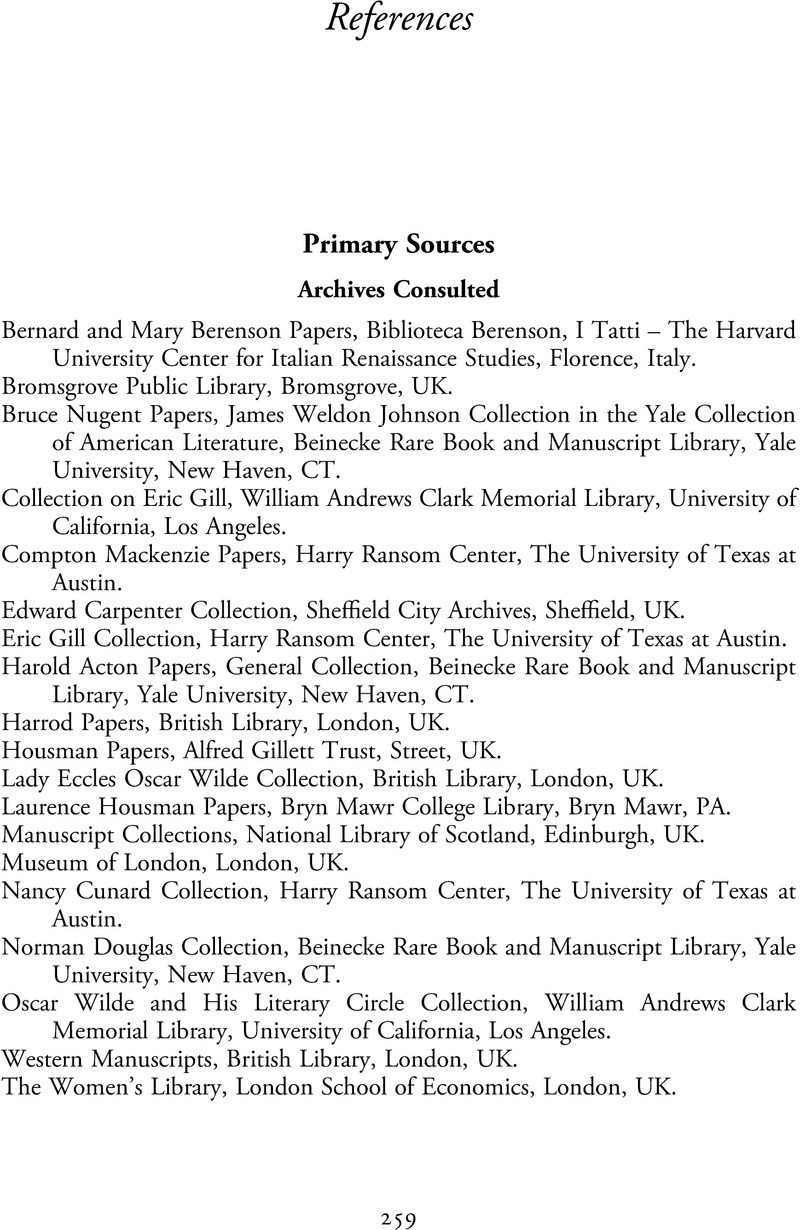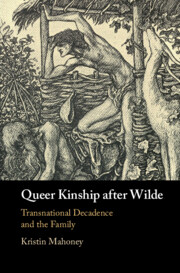Book contents
References
Published online by Cambridge University Press: 15 September 2022
Summary

- Type
- Chapter
- Information
- Queer Kinship after WildeTransnational Decadence and the Family, pp. 259 - 275Publisher: Cambridge University PressPrint publication year: 2022

